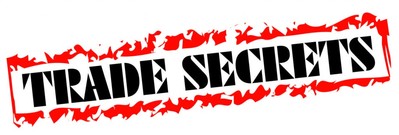Design PatentsWe touched on utility patents in an earlier post, so let’s now talk about design patents. While utility patents generally protect the way an article is used, i.e., its function, design patents protect the way an article looks. A single invention may be protectable with both a utility and a design patent. Moreover, a product that is protectable by design patent may also be further protectable by trademark or trade dress registration.
0 Comments
DefinitionTrade Dress is defined as: the characteristics of the visual appearance of a product or its packaging (or even the design of a building) that signify the source of the product to consumers.
Products have a personality, and having a winning personality is very valuable. The elements of a product’s personality or brand image is its packaging or the total commercial image of a product can be protected under Trademark law. Like a traditional Trademark, Trade Dress must be registered with the United States Patent and Trademark Office (“USPTO”) to receive the maximum amount of protection from infringement. For Trade Dress to receive protection or to be registered it must be:
DefinitionA Trade Secret is a formula, practice, process, design, instrument, pattern, commercial method, or compilation of information which is not generally known or reasonably ascertainable by others, and by which a business can obtain an economic advantage over competitors or customers. Unlike all others areas of Intellectual Property Law, Trade Secrets are not filed at either the state or federal level. Trade Secrets, whether a simple customer list or a complex block of computer code, are among the most valuable competitive advantage that companies have.
To break it down, information becomes a Trade Secret when:
As discussed in the post that began this series on Intellectual Property, a Trademark is a distinctive design, picture, emblem, logo or wording (or combination) affixed to goods for sale to identify the manufacturer as the source of the product. When a Trademark is used to identify services, it is usually called a Service Mark. A Trademark owner may be an individual, business organization, or any other legal entity. Trademarks are located on packages, labels, vouchers, or on the product itself. Often, you will see Trademarks designated by one of the following three emblems: ™, ℠, and ®.
As a starting point, let’s revisit the definition of a Copyright: Copyright – the exclusive right of the author or creator of a literary or artistic property (such as a book, movie or musical composition) to print, copy, sell, license, distribute, transform to another medium, translate, record or perform or otherwise use (or not use) and to give it to another by will. There are few worse feelings than seeing the work that you produced being used by someone else without permission. I have talked to many creative, small businesses, or freelancers, who are frustrated when they discover that their work has been duplicated. It is a violation of their hard work. Also, when you are boot-strapping your business, it is extremely frustrating to see someone else benefit from your efforts and gain the rewards when you really need those rewards coming to you instead to keep your business afloat.
In this series of posts, I’m going to discuss how to protect your Intellectual Property (“IP”). We’ll start with some definitions here because the difference between each category sometimes gets confusing. The most important part of protecting your IP is knowing what type of IP you have. |
Author: Aimee HaynesI motivate, I blog, I listen, I give advice, I help, I create, I work with others, I stand my ground when needed, and I am always open to new ideas. In addition to the qualities that define me most, I'm also a Corporate Law attorney working with entrepreneurs, creatives, and small businesses to help them achieve success.. Archives
September 2016
Categories
All
|




 RSS Feed
RSS Feed
